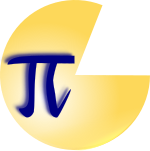Essential Skills for Problem Solving - Drawing
20 Jun 2016Technical drawing is an important skill that is routinely underemphasized because the process of teaching and assessing cannot be subjected to automation. As a result, few students are capable of making drawings to help solve geometry problems. Consequently, the study of geometry has been watered down to questions that can be solved using one or at most two steps on the provided figure. Geometry, however, is one of the most fertile rule-based environments for creating puzzles - as such, it has been and always will be heavily used in mathematics competitions as well as in any assessment of skills that pertain to visualization, orientation in 3-D space or in the plane, measurement, and estimation. Creativity is especially necessary when solving those puzzles that require the student to create additional elements in the figure in order to bridge the logical gap between the elements provided and the answer that is required.
Let us consider what a student is to do when faced with the following problem:
I haven’t even chosen a problem that requires additional creative construction, just direct construction based on the specification in the statement. Statistically speaking, most students will skip this problem for the sole reason that it requires drawing. I think they perceive drawing as a task that requires time without, in and of itself, solving the problem. The risk that they may work on the drawing and still be unable to solve the problem discourages them.
There are people who are going to ask why the drawing is not provided. There are many reasons for that:
-
for some problems, the level of detail that is necessary in order to make sense of the drawing is so great, that the size of a usable drawing exceeds the limits that are reasonable for producing a test paper;
-
sometimes, we need several drawings anyway because the density of the elements is large and obstructs the view;
-
the problem, after all, is a puzzle - if we make the drawing for them, why not give them the whole solution followed by two buttons: “I get it” and “I don’t get it”?
-
the skills that are needed to make a reasonably useful hand drawing are some of the skills that are tested for: planning, selection of key vs. non-essential elements, pattern recognition, estimation, creativity, a complete understanding of data sufficiency in geometry (what is the complete knowledge we can derive logically from the given knowledge), a keen sense of the effect certain symmetries may have on the solution, the capacity to make useful decisions quickly (“this drawing is not helpful, I’m going to re-draw it in a different way”) and more;
-
on a more practical side, at a certain point in time, it became clear to examiners that students were measuring lengths on the provided figure (usually drawn to scale) in order to help with the solution or instead of solving.
Most students who can make a useful drawing in the time required have taught themselves how to do so. Other students just skip these problems. Since, on average, geometry problems often constitute up to 30% of the exam, the consequences of skipping a large portion of the geometry can have a severe impact on a student’s grade.
